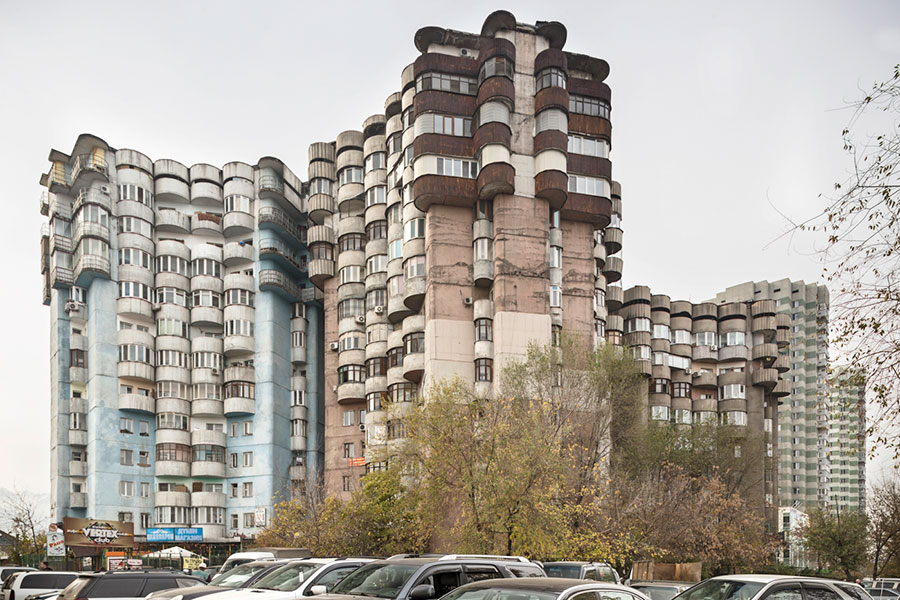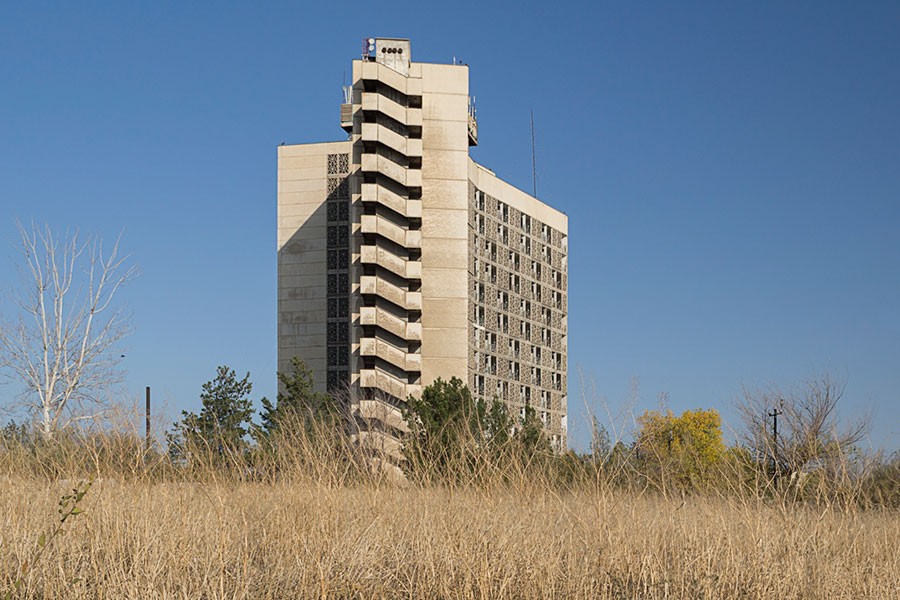In Pictures: The Complex Legacy of Soviet Architecture
A new book surveys buildings in Central Asia and documents their distinctive styles
A new book surveys buildings in Central Asia and documents their distinctive styles
In the latter half of the 20th century, striking examples of socialist architecture were erected across Central Asia, in Uzbekistan, Tajikistan, Kyrgyzstan and Kazakhstan. While this unique style of architecture, now described as Soviet modernism, aimed to promote integration, modernization and social control, in practice distinct trends emerged. Soviet Asia, a new book published by FUEL, documents some of this architectural variety with photographs of buildings constructed between 1960–80.

The standardized aesthetic of many of the buildings exemplifies the aim of the Soviet political project: to create a consistent standard of living for all countries in the Eastern Bloc.

Ideas of modernity devised in distant Moscow were embodied in buildings and statues and erected in cities across the Soviet territories.

Many buildings constructed during the Soviet era were decorated with elaborate mosaics. These often featured motifs inspired by folklore and stylized interpretations of local customs.

Soviet residential buildings generally feature two characteristics: firstly, they are often standardized and mass-produced, secondly, they are embellished with motifs from local or national culture.

Formerly centres for daily life, bazaars were standardized and modernized in the Soviet era. However, some customs were maintained: fruit and vegetables on sale in the markets were grown, in part, by members of the community in their own gardens.

In the 1960s, residential buildings tended to be limited to five stories. However, by the final decades of the Soviet Union buidlings became taller, cramming more people into identically-planned houses.

While the legacy of Soviet modernism is often remembered as one of standardized industrial architecture, these images show the diversity of individual projects and the style’s more complex heritage.






















